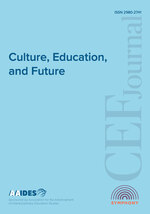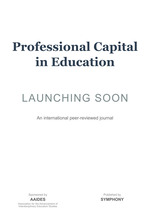Currere as contemporary art: Weaving creative research, purposeful vulnerability, and poetic expression to nurture teacher self-knowledge
DOI:
https://doi.org/10.70116/3065457245Keywords:
Currere, arts-based research, contemporary art, teacher self-reflection, purposeful vulnerabilityAbstract

We Teach as We Are Taught, 2024
Currere Stage 4, Synthetic:
Connections between past, practice, and who I am now
Speculative design for life-sized installation, draft 3
Digital collage print & shredded dissertation
Downloads
References
Deleuze, G., & Guattari, F. (1987). A thousand plateaus: Capitalism and schizophrenia (B. Massumi, Trans.). University of Minnesota Press.
Freire, P. (1993). Pedagogy of the oppressed (M. B. Ramos, Trans.). Continuum.
Gude, O. (2004). Postmodern principles: In search of a 21st century art education. Art Education, 57(1), 6-14. DOI: https://doi.org/10.1080/00043125.2004.11653528
Hetland, L., Winner, E., Veenema, S. A., & Sheridan, K. (2013). Studio thinking 2: The real benefits of visual arts education. Teachers College Press.
Lucero, J. (2023). Conceptualist permissions for teacher posture. Exhibition at the Center for Visual Art, Metropolitan State University of Denver, May 18 - August 5. Denver, CO, United States.
Marshall, J. (2010). Five ways to integrate: Using strategies from contemporary art. Art Education, 63(3), 13-19. DOI: https://doi.org/10.1080/00043125.2010.11519065
Marshall, J., & D’Adamo, K. (2011). Art practice as research in the classroom: A new paradigm in art education. Art Education, 64(5), 12-18. DOI: https://doi.org/10.1080/00043125.2011.11519139
Pinar, W. F. (1975). The method of currere (PDF). American Educational Research Association.
Pinar, W. F. (1978). The reconceptualisation of curriculum studies. Journal of Curriculum Studies, 10(3), 205-214. DOI: https://doi.org/10.1080/0022027780100303
Downloads
Published
How to Cite
Issue
Section
License
Copyright (c) 2024 Symphony

This work is licensed under a Creative Commons Attribution 4.0 International License.










